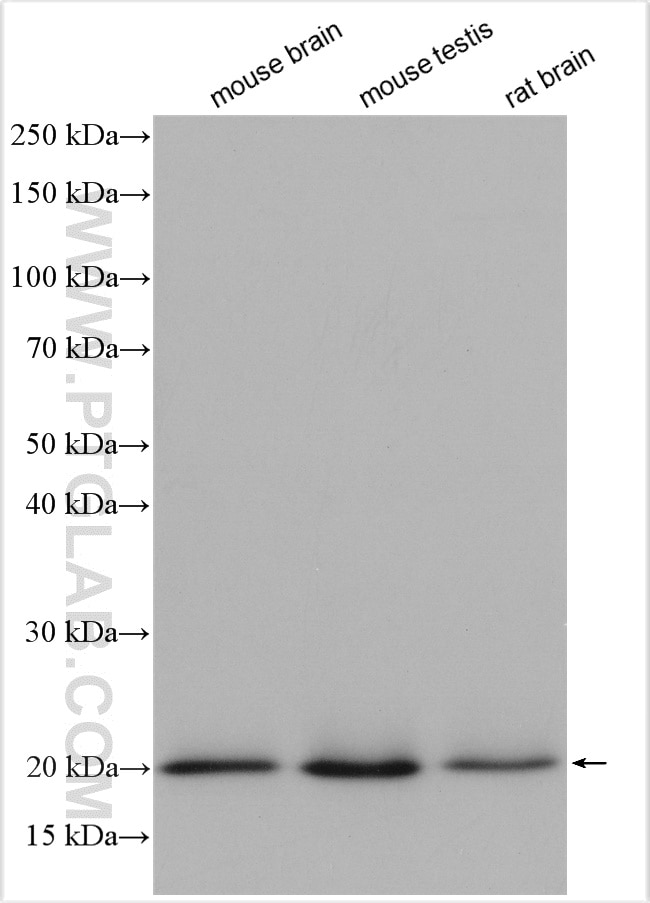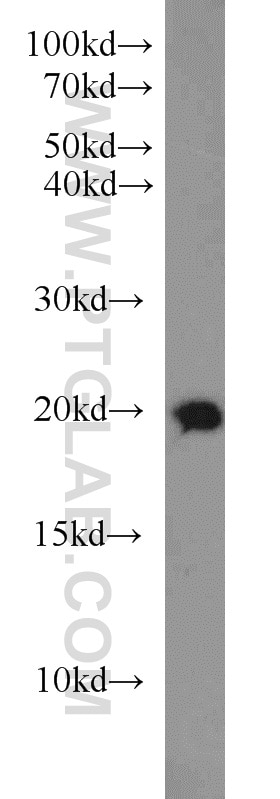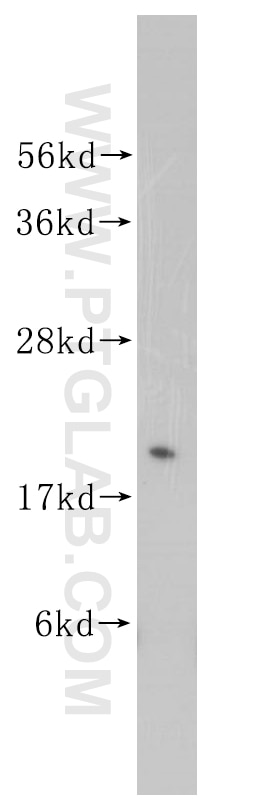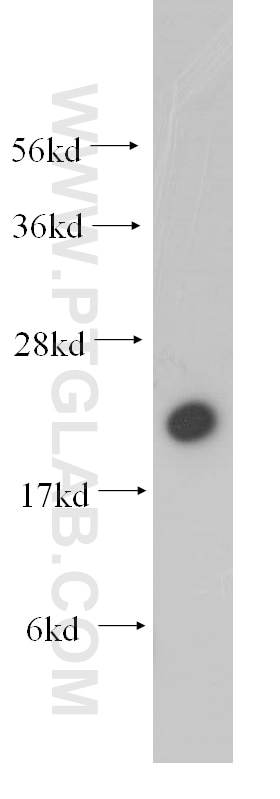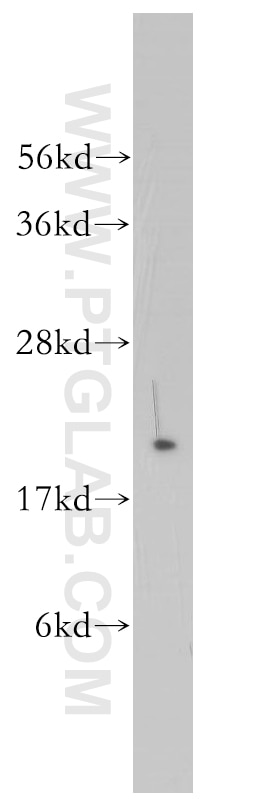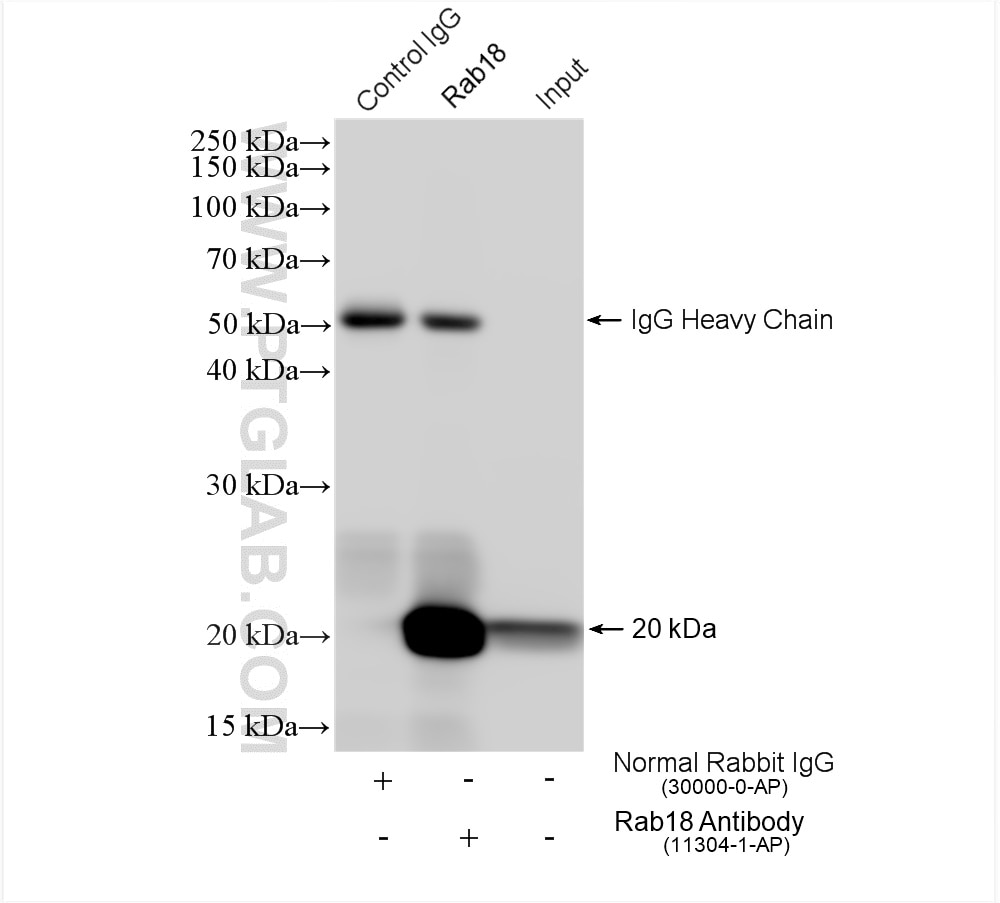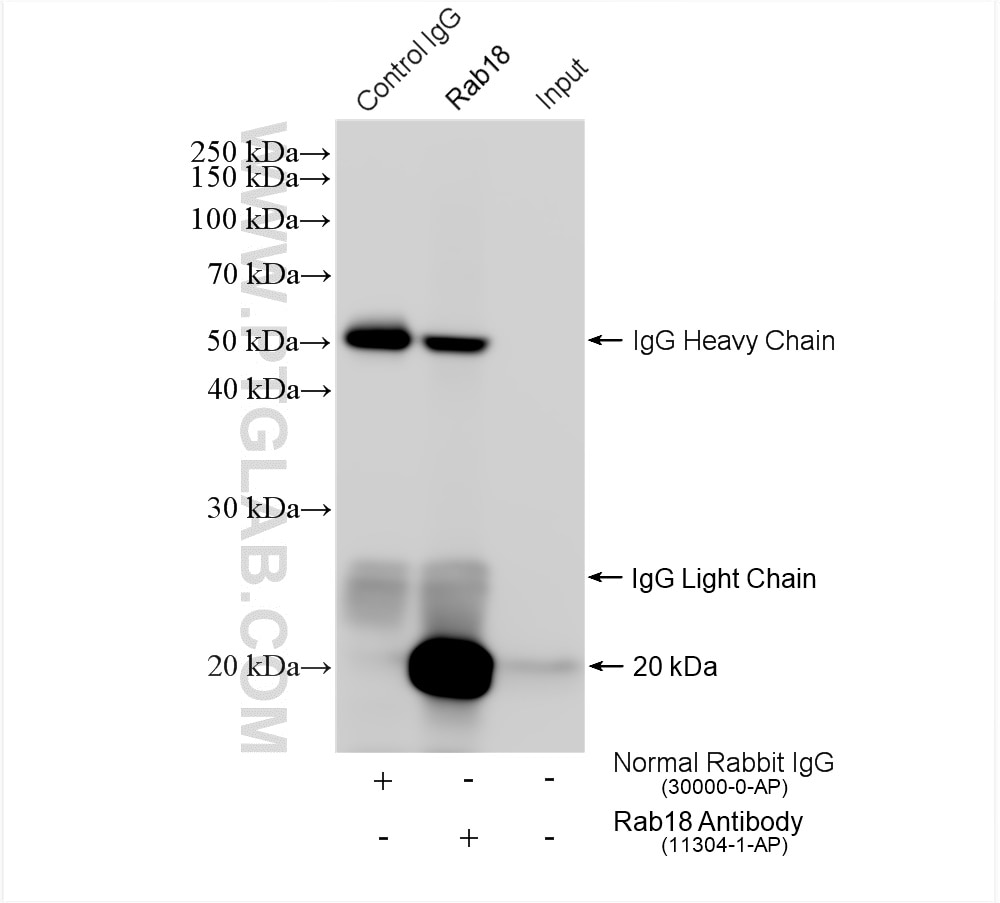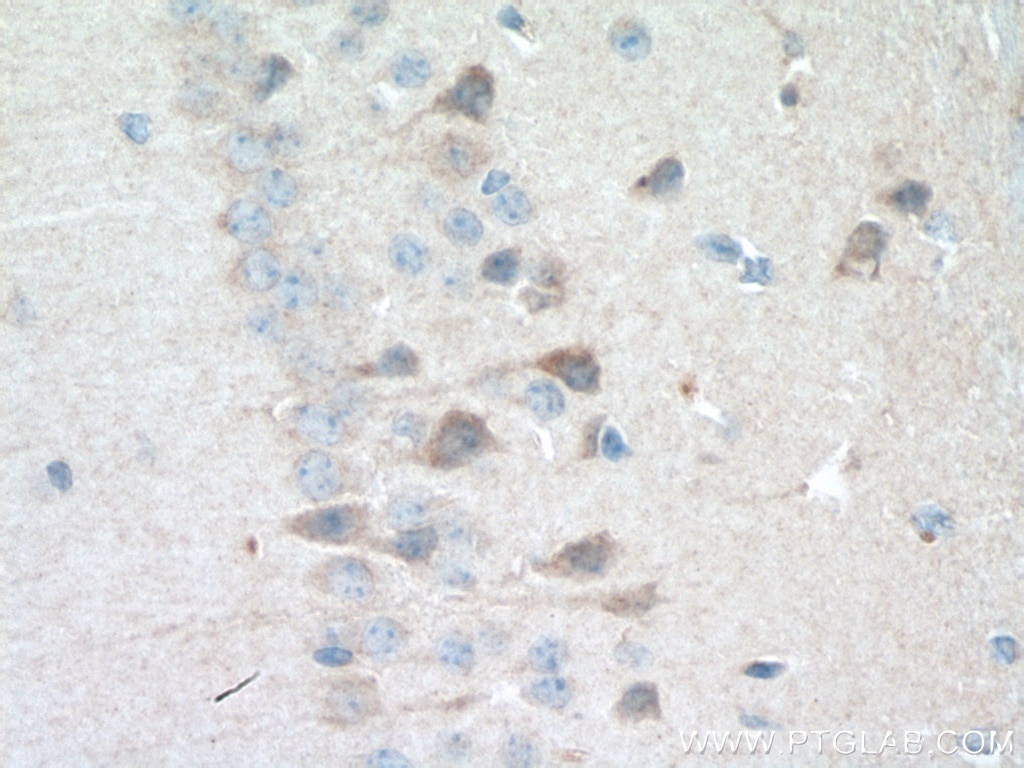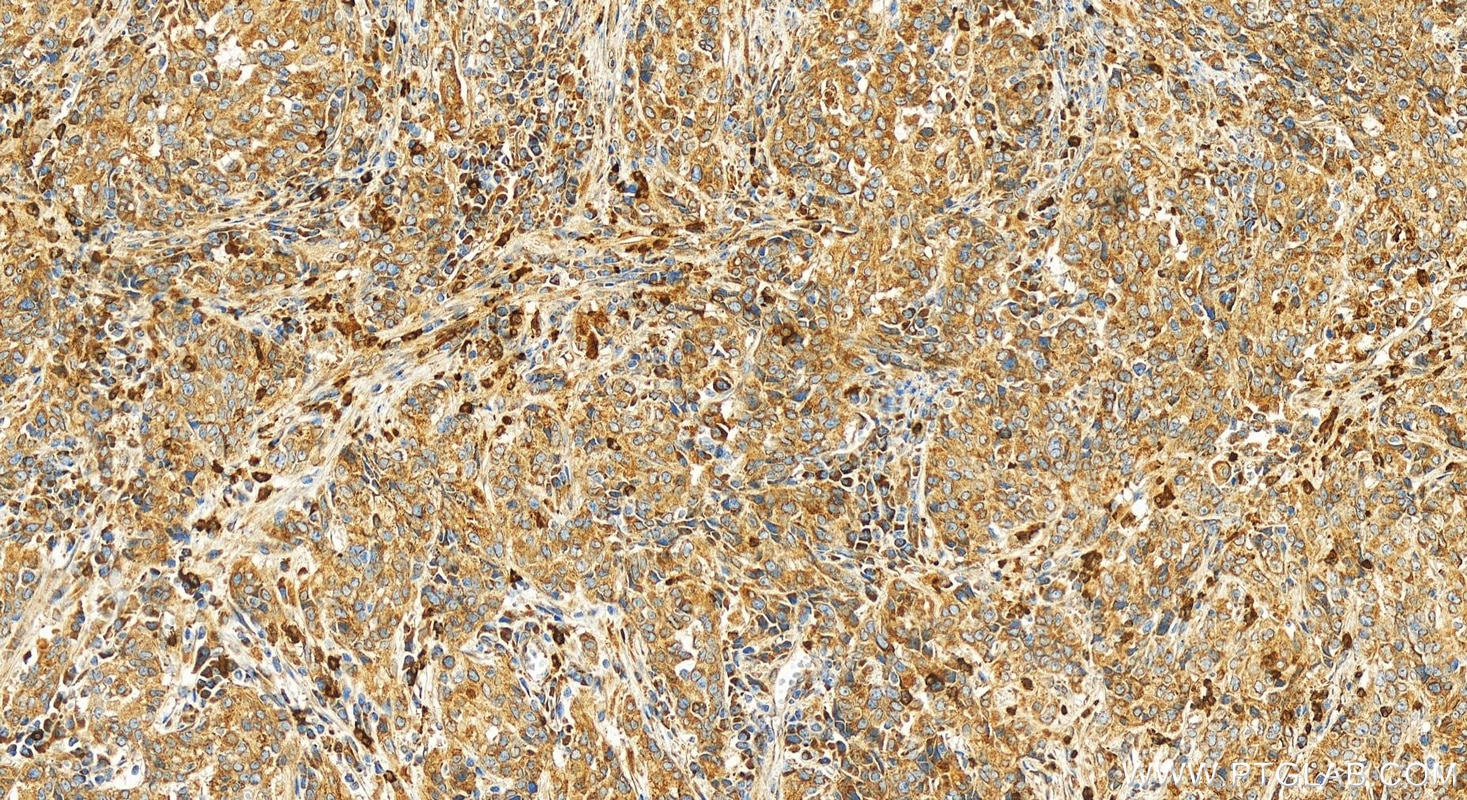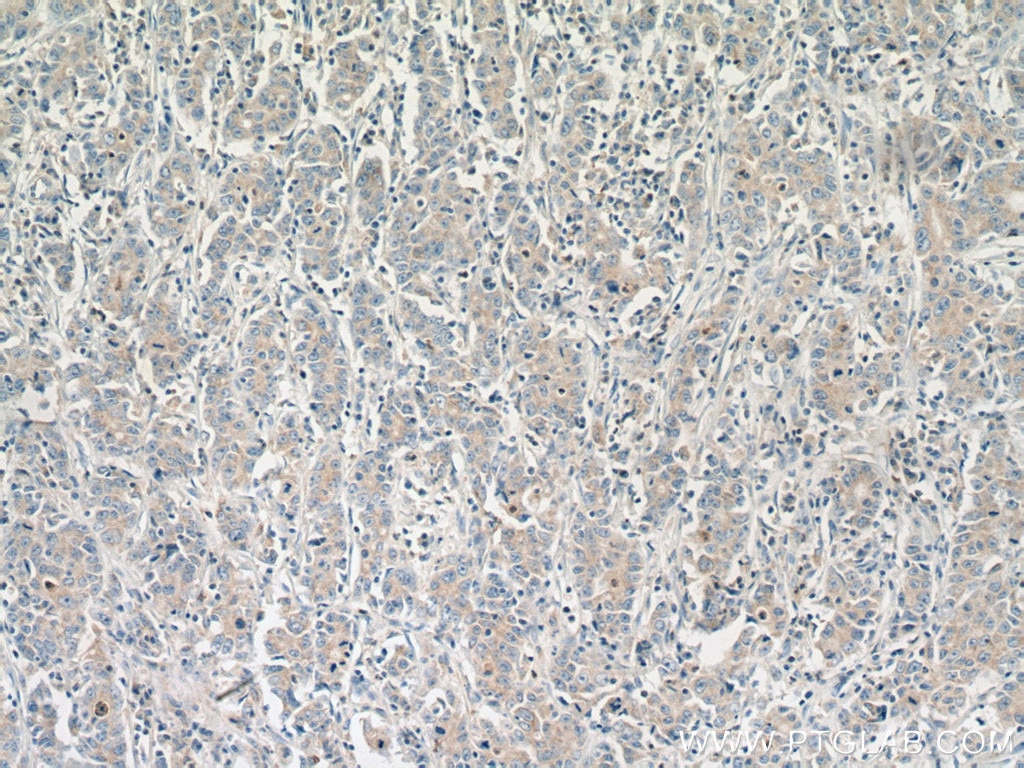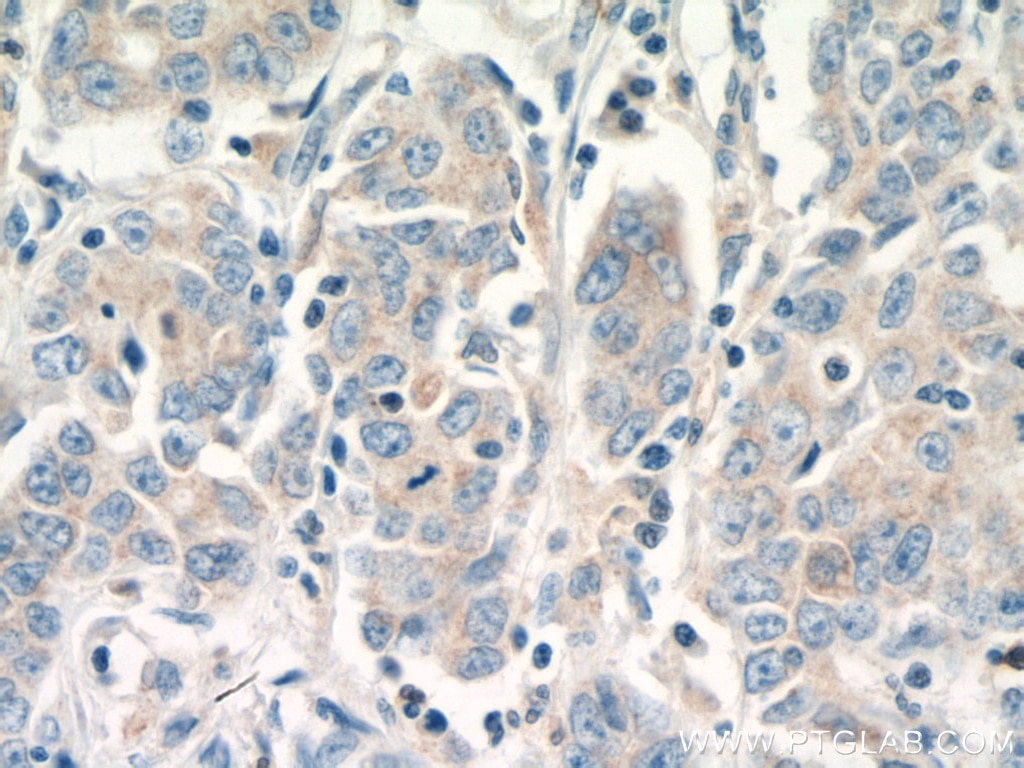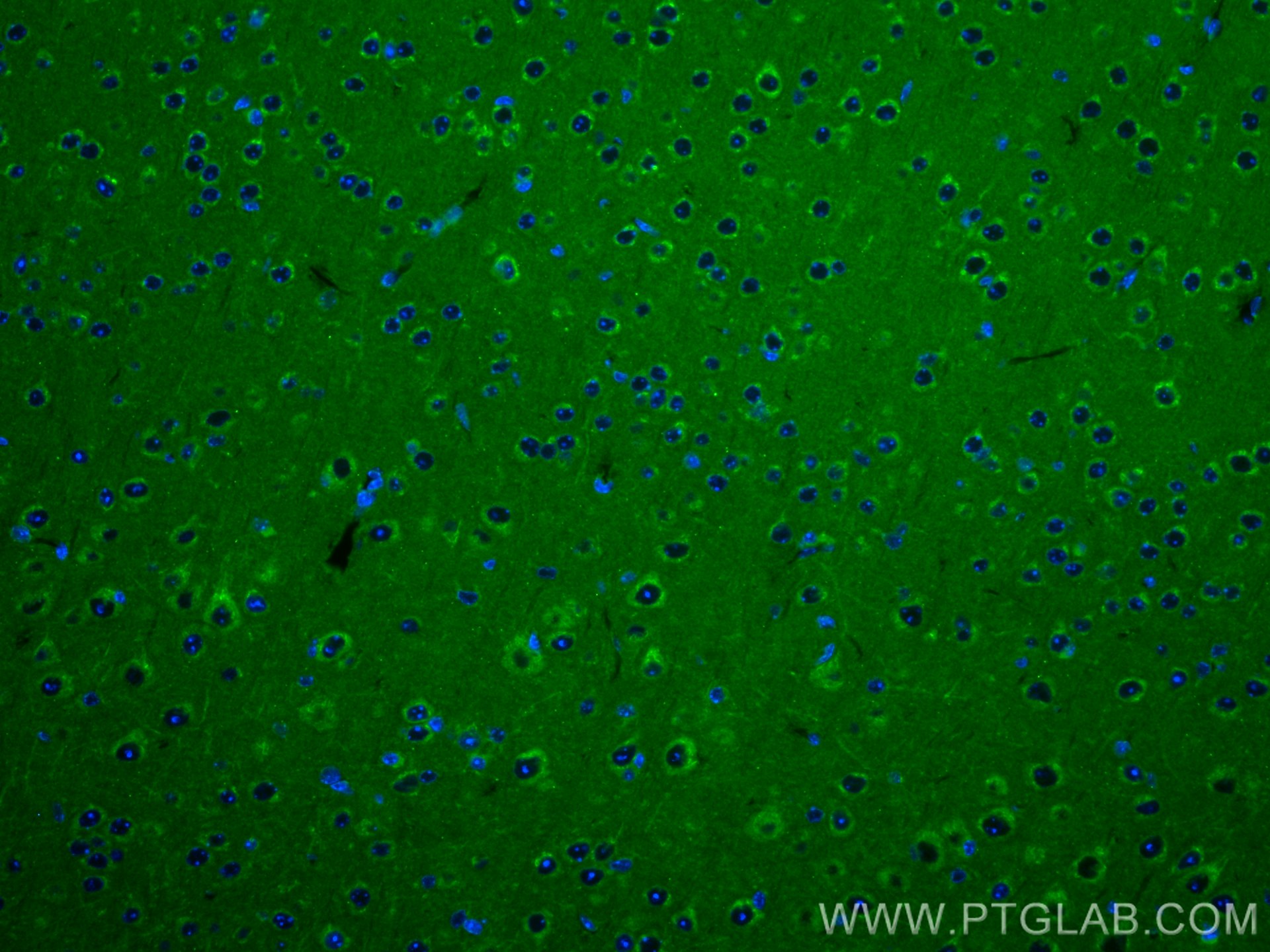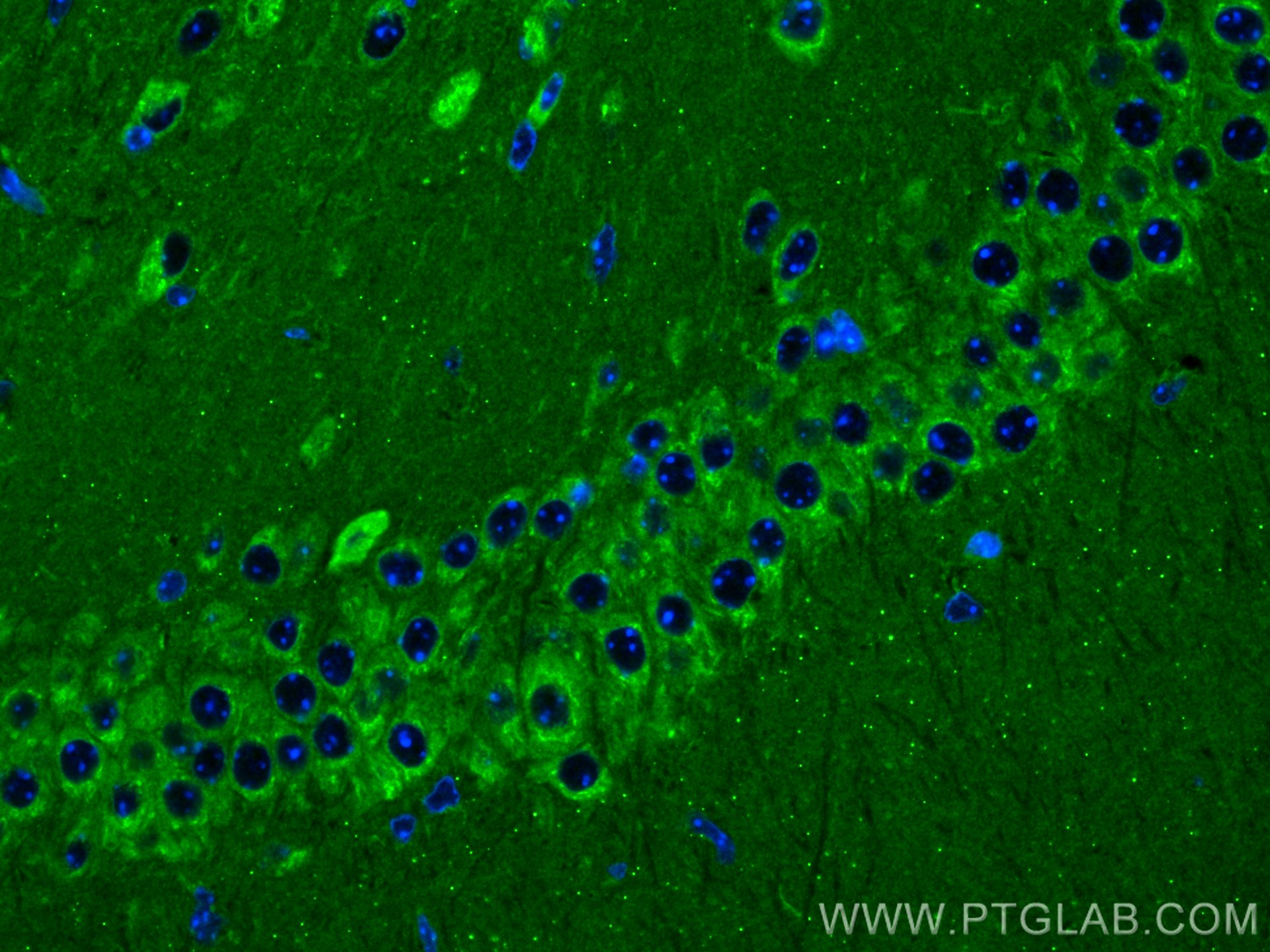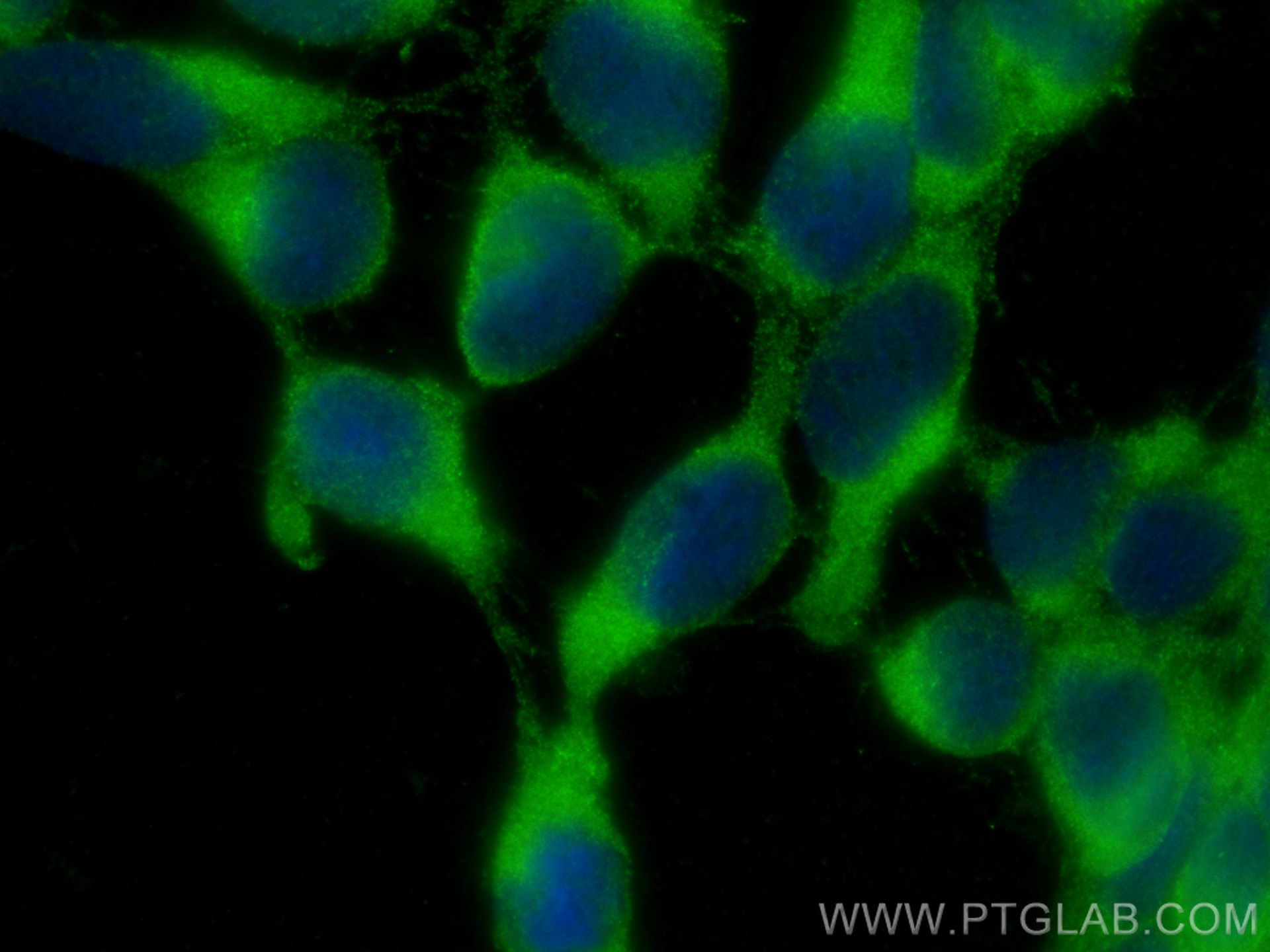- Phare
- Validé par KD/KO
Anticorps Polyclonal de lapin anti-Rab18
Rab18 Polyclonal Antibody for WB, IHC, IF/ICC, IF-P, IP, ELISA
Hôte / Isotype
Lapin / IgG
Réactivité testée
Humain, rat, souris et plus (2)
Applications
WB, IHC, IF/ICC, IF-P, IP, CoIP, ELISA
Conjugaison
Non conjugué
N° de cat : 11304-1-AP
Synonymes
Galerie de données de validation
Applications testées
| Résultats positifs en WB | tissu cérébral de souris, cellules PC-3, tissu cardiaque humain, tissu cérébral de rat, tissu cérébral humain, tissu testiculaire de souris, tissu testiculaire humain |
| Résultats positifs en IP | tissu testiculaire de souris, tissu testiculaire de rat |
| Résultats positifs en IHC | tissu de cancer de l'estomac humain, tissu cérébral de souris il est suggéré de démasquer l'antigène avec un tampon de TE buffer pH 9.0; (*) À défaut, 'le démasquage de l'antigène peut être 'effectué avec un tampon citrate pH 6,0. |
| Résultats positifs en IF-P | tissu cérébral de souris, |
| Résultats positifs en IF/ICC | cellules HEK-293, |
Dilution recommandée
| Application | Dilution |
|---|---|
| Western Blot (WB) | WB : 1:1000-1:6000 |
| Immunoprécipitation (IP) | IP : 0.5-4.0 ug for 1.0-3.0 mg of total protein lysate |
| Immunohistochimie (IHC) | IHC : 1:200-1:2000 |
| Immunofluorescence (IF)-P | IF-P : 1:50-1:500 |
| Immunofluorescence (IF)/ICC | IF/ICC : 1:200-1:800 |
| It is recommended that this reagent should be titrated in each testing system to obtain optimal results. | |
| Sample-dependent, check data in validation data gallery | |
Applications publiées
| KD/KO | See 8 publications below |
| WB | See 16 publications below |
| IHC | See 7 publications below |
| IF | See 5 publications below |
| CoIP | See 1 publications below |
Informations sur le produit
11304-1-AP cible Rab18 dans les applications de WB, IHC, IF/ICC, IF-P, IP, CoIP, ELISA et montre une réactivité avec des échantillons Humain, rat, souris
| Réactivité | Humain, rat, souris |
| Réactivité citée | Humain, porc, singe, souris |
| Hôte / Isotype | Lapin / IgG |
| Clonalité | Polyclonal |
| Type | Anticorps |
| Immunogène | Rab18 Protéine recombinante Ag1841 |
| Nom complet | RAB18, member RAS oncogene family |
| Masse moléculaire calculée | 206 aa, 23 kDa |
| Poids moléculaire observé | 20-23 kDa |
| Numéro d’acquisition GenBank | BC015014 |
| Symbole du gène | RAB18 |
| Identification du gène (NCBI) | 22931 |
| Conjugaison | Non conjugué |
| Forme | Liquide |
| Méthode de purification | Purification par affinité contre l'antigène |
| Tampon de stockage | PBS with 0.02% sodium azide and 50% glycerol |
| Conditions de stockage | Stocker à -20°C. Stable pendant un an après l'expédition. L'aliquotage n'est pas nécessaire pour le stockage à -20oC Les 20ul contiennent 0,1% de BSA. |
Informations générales
RAB18 is a member of a family of Ras-related small GTPases. RAB18 plays a role in apical endocytosis/recycling, and may be implicated in transport between the plasma membrane and early endosomes. It also plays a key role in eye and brain development and neurodegeneration. Defects in RAB18 are associated with Warburg micro syndrome type 3.
Protocole
| Product Specific Protocols | |
|---|---|
| WB protocol for Rab18 antibody 11304-1-AP | Download protocol |
| IHC protocol for Rab18 antibody 11304-1-AP | Download protocol |
| IF protocol for Rab18 antibody 11304-1-AP | Download protocol |
| IP protocol for Rab18 antibody 11304-1-AP | Download protocol |
| Standard Protocols | |
|---|---|
| Click here to view our Standard Protocols |
Publications
| Species | Application | Title |
|---|---|---|
J Clin Invest RINT1 deficiency disrupts lipid metabolism and underlies a complex hereditary spastic paraplegia | ||
Dev Cell KIF3B promotes a PI3K signaling gradient causing changes in a Shh protein gradient and suppressing polydactyly in mice | ||
PLoS Pathog Rab18 Binds to Hepatitis C Virus NS5A and Promotes Interaction between Sites of Viral Replication and Lipid Droplets. | ||
Food Chem Pu-erh tea increases the metabolite Cinnabarinic acid to improve circadian rhythm disorder-induced obesity. | ||
Carcinogenesis Hepatitis B virus X protein upregulates oncogene Rab18 to result in the dysregulation of lipogenesis and proliferation of hepatoma cells.
|
